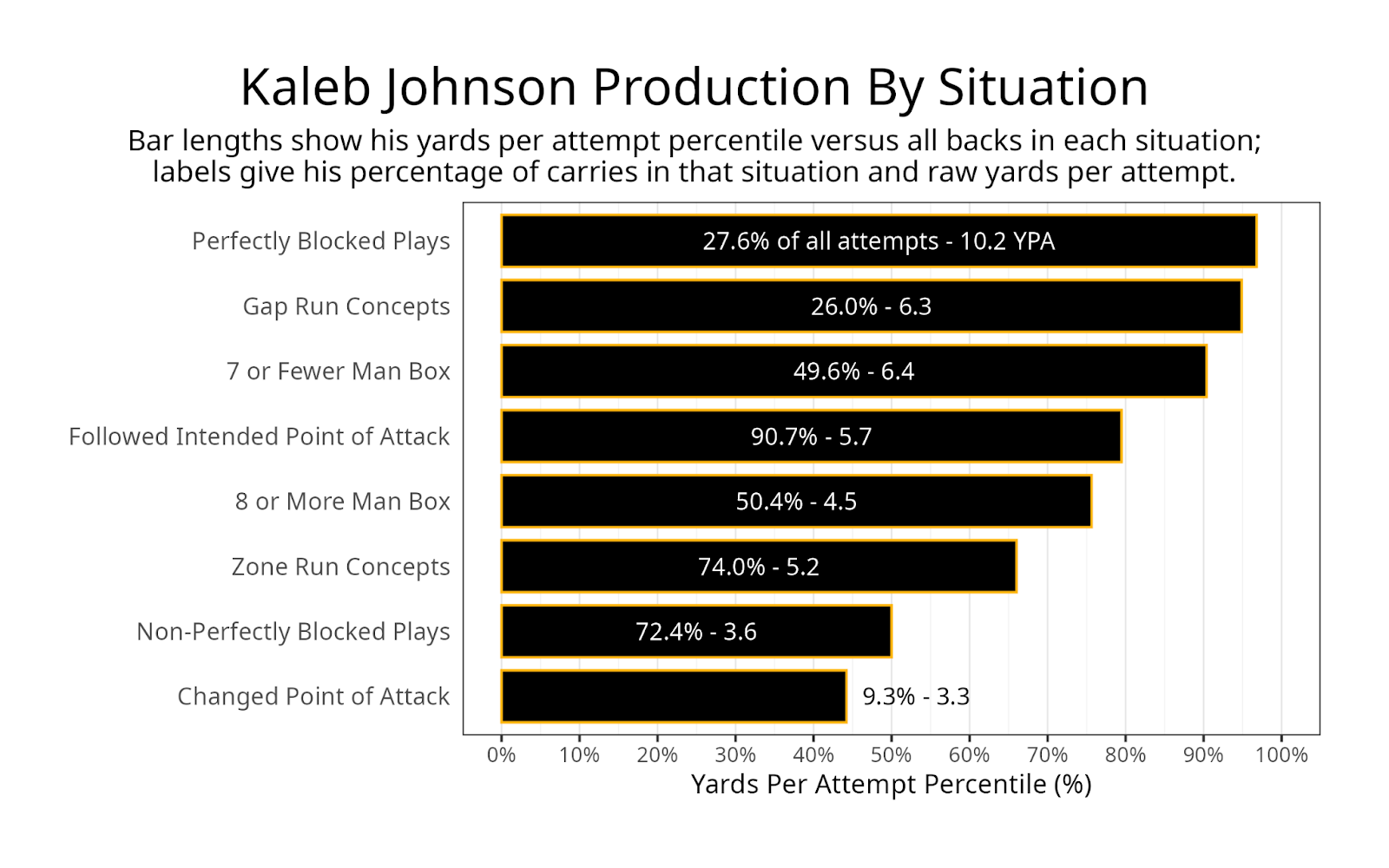Fantasy Football: Winners and losers from Day 2 of the 2025 NFL Draft

2YAC4PA Central Florida running back RJ Harvey (7) catches a kickoff against Cincinnati during the first half of an NCAA college football game, Saturday, Oct. 12, 2024, in Orlando, Fla. (AP Photo/Phelan M. Ebenhack)
By
- Multiple teams find their new lead running back:Quinshon Judkins landed with the Cleveland Browns and R.J. Harvey went to the Denver Broncos. Both players should lead their teams in fantasy points as a rookie.
- TreVeyon Henderson finds a questionable landing spot: Henderson joined the New England Patriots, where there is a chance he only plays on third downs and doesn’t see many opportunities on early downs.
- Celebrate the 2025 NFL Draft with 25% off PFF+: Get 25% off PFF+ and unlock access to player grades, fantasy tools and the 2025 Draft Guide.
Estimated Reading Time: 7 minutes

The second and third rounds of the 2025 NFL Draft are complete, and the fantasy football landscape is already shifting. From top rookie picks finding ideal landing spots to veterans suddenly facing new competition, day two offered several key developments that will impact draft boards this summer.
Here’s a breakdown of the biggest fantasy football winners and losers after Day 2 of the 2025 NFL Draft.
Click here for more draft tools:
Winner: RB Quinshon Judkins, Cleveland Browns
Judkins was the first of several Day 2 running backs, and he landed with one of the teams that needed a running back most. The Browns have opted not to re-sign Nick Chubb or D’Onta Foreman, leaving only Jerome Ford and Pierre Strong Jr. on the roster. While Ford was, at times, a feature back last year, he also lost playing time when Chubb was back, or even to Foreman at times.
With Cleveland, the door is wide open for Judkins to become the team leader in carries. This would likely leave Ford as a third-down back. This isn’t the most ideal landing spot due to Cleveland’s offensive line. The line is generally fine at avoiding negative blocks, but not great at generating positive blocks. Four-fifths of the projected starting lineup is on the wrong side of 30 years old. While the landing spot isn’t perfect, Judkins avoided a situation where he would be a backup with little chance of becoming a starter or in a committee where he might not lead his team in carries. This destination makes him a borderline fantasy starter, and if he exceeds expectations, he could be a steal for fantasy managers.
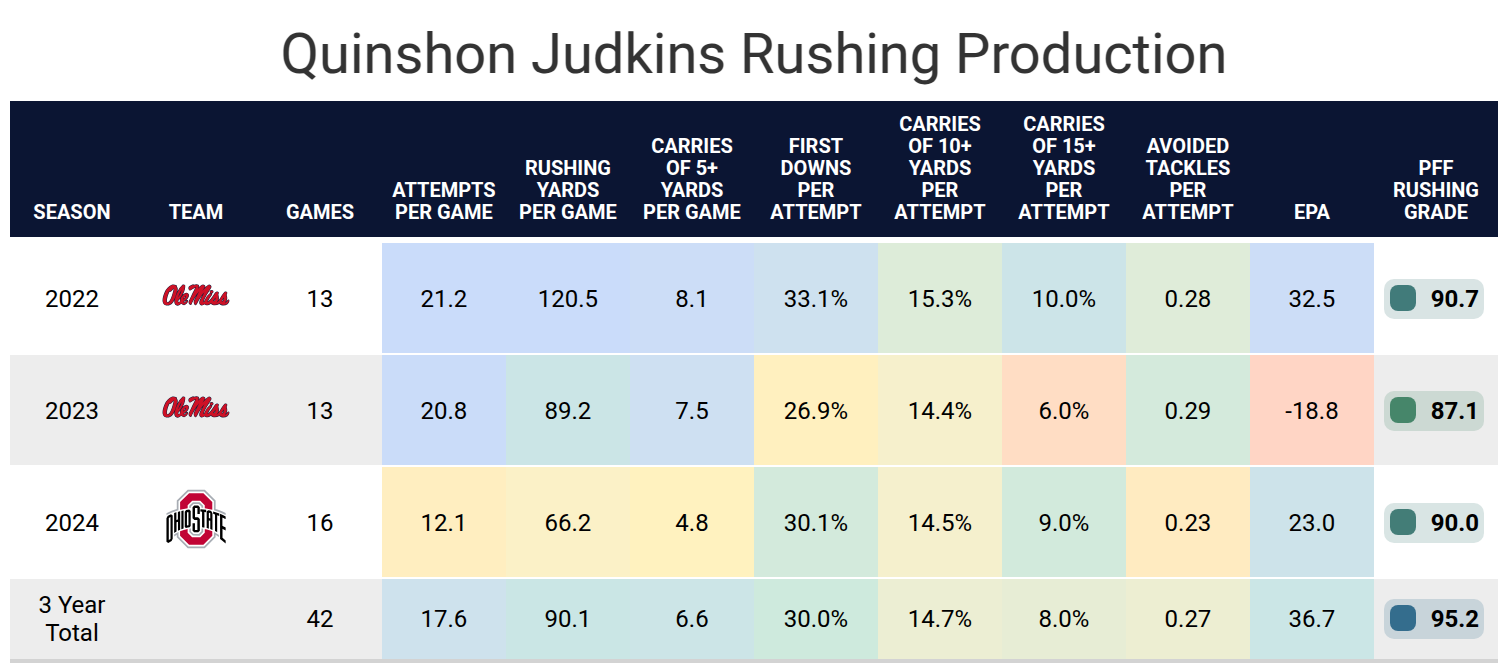
Winner: RB R.J. Harvey, Denver Broncos
Harvey was the fifth running back selected in the NFL draft, while both the PFF big board and consensus big boards had him as the eighth or ninth best running back. He lands with a Broncos team that needed to make a splash at running back. They had a bottom-five team rushing grade last season, lost Javonte Williams and hadn’t added anyone.
Harvey was an incredibly productive feature running back at UCF, averaging over 130 rushing yards per game last season. He is also very experienced in the passing game, finishing with 1.44 yards per route run over the previous three seasons. He is on the smaller side for running backs, at 5-foot-8 and 205 pounds, but head coach Sean Payton has experience with smaller backs, such as Darren Sproles. Running backs in Payton’s offense typically have the opportunity to see a high target share, which Harvey should be able to handle.
Harvey will be far from a safe fantasy pick because the Broncos could still utilize a heavy three-man committee. However, Harvey could have some excellent fantasy seasons in this offense.
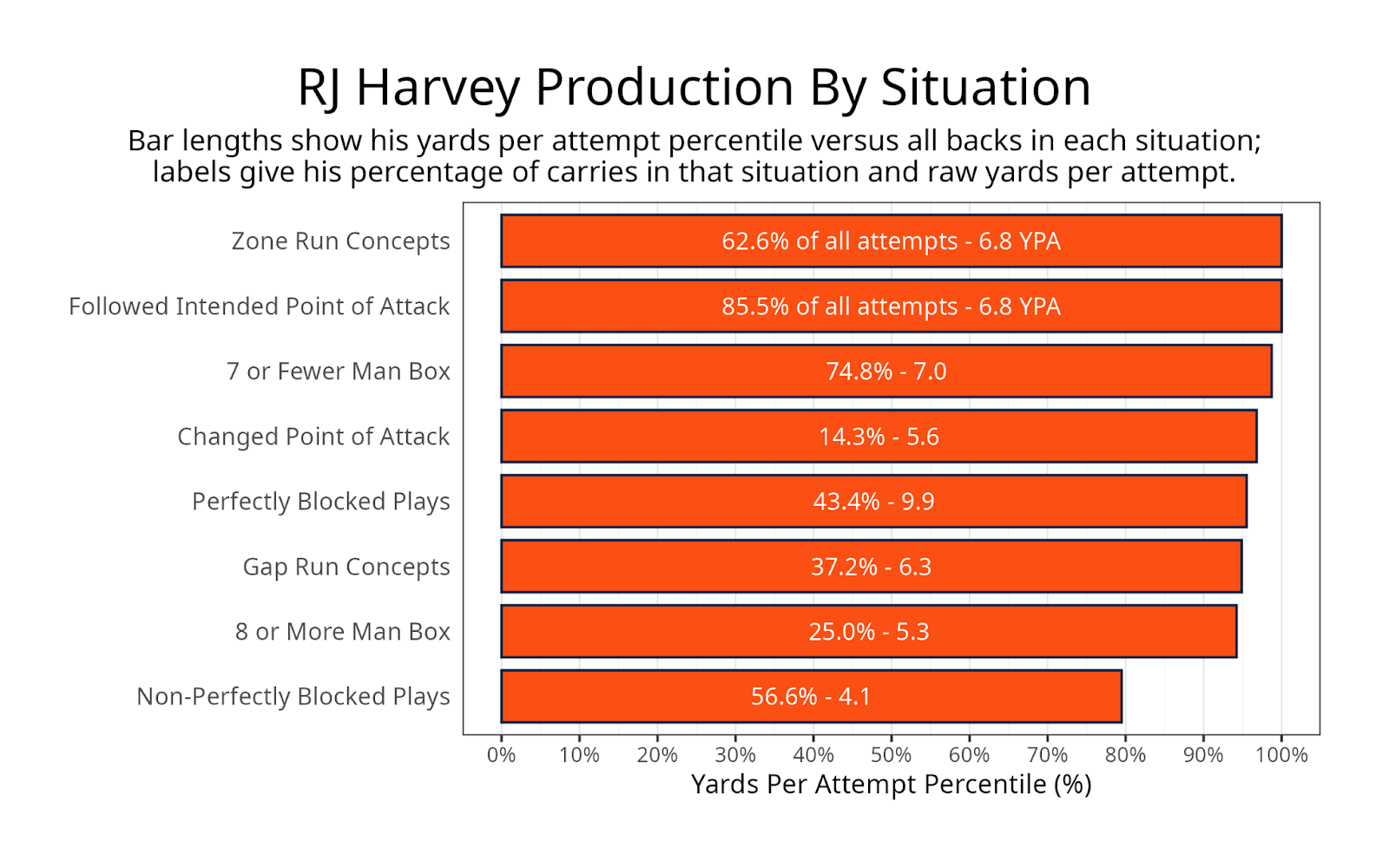
Shough was the consensus fifth quarterback on the board and expected to get picked in the third round. He ended up getting selected 40th overall by the Saints as the third quarterback. He also has a decent chance of starting for part or all of his rookie season. Carr is dealing with a shoulder injury and could have season-ending surgery on the shoulder. The Saints don’t currently have clarity on the situation. Shough should be able to beat out the other quarterbacks on the depth chart.
If Shough is the starter, he has a chance to be fantasy-relevant. He is one of the more athletic quarterbacks expected to get drafted. While he didn’t run much in his one season at Louisville, he scrambled at a very high rate and ran with designed runs at a high rate at Texas Tech. Saints head coach Kellen Moore just won a Super Bowl with another athletic quarterback, Jalen Hurts. While there is certainly a chance Carr is ready for the season, or Shough’s rushing doesn’t translate to the NFL, the fact that there is a chance Shough could be a Week 1 starter with potential rushing production is better than what most expected for Shough heading into the draft.
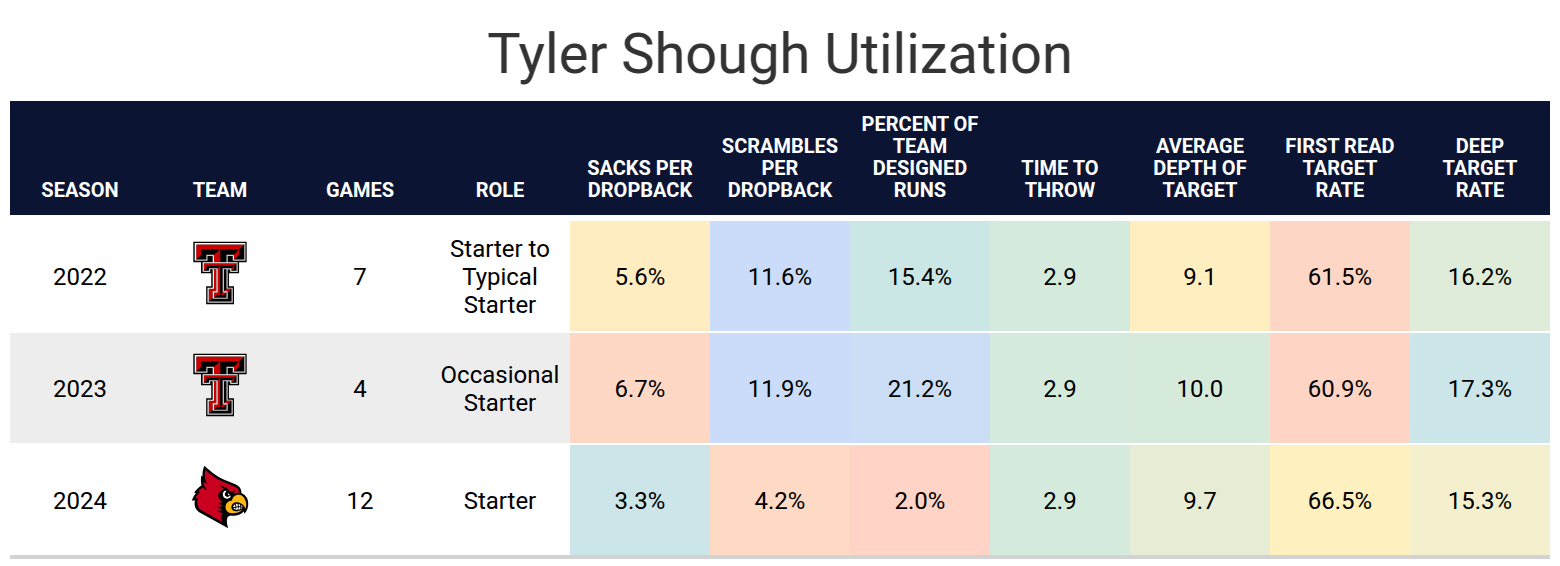
Most teams retained their primary receiving tight ends from last season, with a few exceptions. The Jets were one of two teams to let their lead tight end go. Three of the four teams that had 600 receiving yards or fewer from their tight ends last season already addressed the position in free agency or the draft. This meant the Jets were one of the very few landing spots for a Day 2 tight end to play significant snaps immediately.
Taylor will compete for snaps with Stone Smartt and Jeremy Ruckert, two players who have averaged less than 10 routes per game over the last three seasons. The Jets’ offensive coordinator is Tanner Engstrand, who spent the previous two seasons as the Detroit Lions’ passing game coordinator, contributing to Sam LaPorta‘s success. His situation appears even better when you consider the following two tight ends picked were Terrance Ferguson to the Los Angeles Rams and Elijah Arroyo to the Seattle Seahawks – two teams that have an established veteran starter
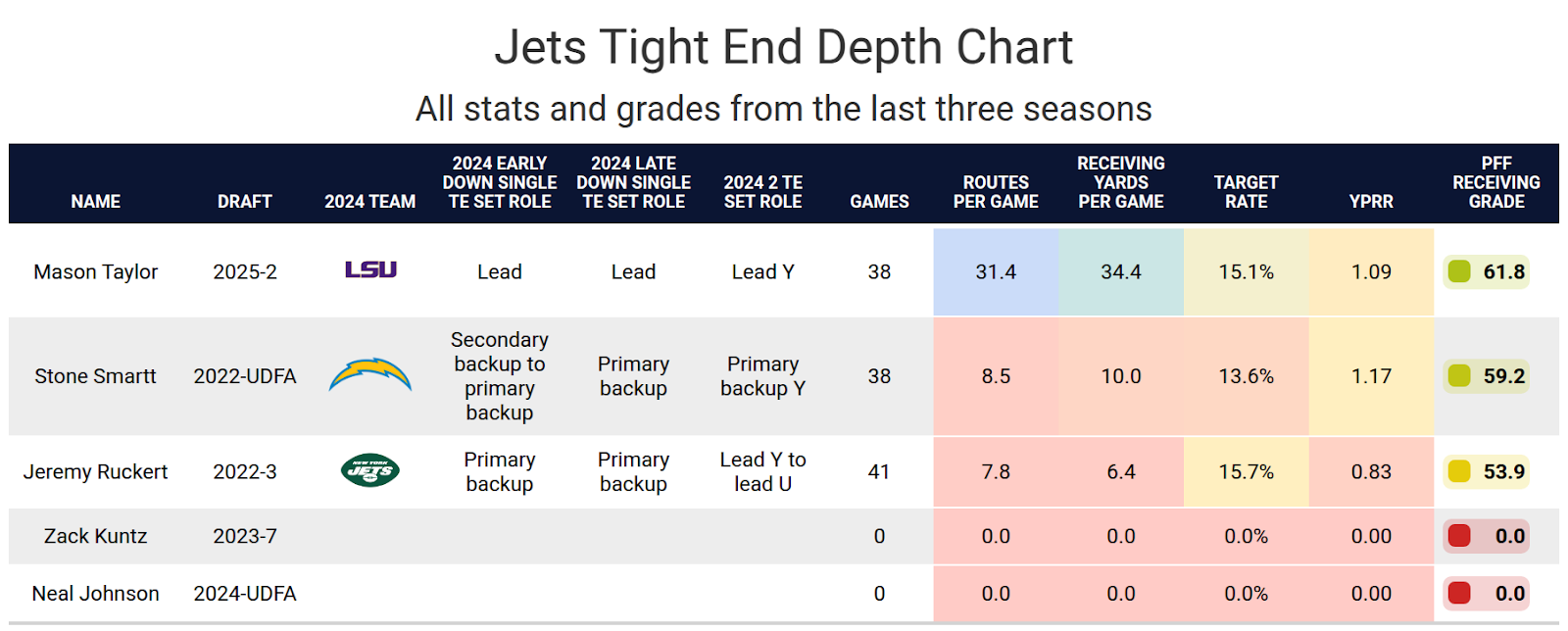
The Raiders were arguably the team that was most in need of a wide receiver in this draft. The Raiders had five wide receivers with more than three targets last season, including Davante Adams, whom they traded early on, and DJ Turner and Terrace Marshall Jr., whom they opted not to re-sign. The Raiders had yet to add a wide receiver in free agency. This means Bech is penciled in as the third wide receiver at worst, and second at best.
Bech was a one-year starter at TCU who moved around in both the slot and out wide. Jakobi Meyers similarly has experience in the slot and out wide, so the two should be able to complement each other, and allow the offense to move players around. While Bech’s ceiling might be limited in an office with Ashton Jeanty and Brock Bowers, his floor will be higher than most wide receivers picked in the second round or later.

Loser: RB TreVeyon Henderson, New England Patriots
Henderson is the second-best receiving back in this class behind Ashton Jeanty. A lot of fantasy analysts had him ranked third for dynasty rookie drafts because there was a chance he could have also seen significant playing time on early downs. There were a few excellent potential landing spots, like the following pick to the Chicago Bears, or later to the Denver Broncos.
Instead, he lands with the Patriots with Josh McDaniels as his offensive coordinator. McDaniels has consistently had a specific third-down back who was separate from his early-down backs. With the Raiders, it was Josh Jacobs on early downs and Ameer Abdullah on third downs. During the previous decade with the Patriots, it was Steven Ridley, LeGarrette Blount, Dion Lewis, Sony Michel and Damien Harris on early downs, and Danny Woodhead, Shane Vereen, James White and Brandon Bolden on third downs. Henderson will likely be a third-down back for the Patriots and won’t get many opportunities on early downs.
In 2018, White led the Patriots in offensive snaps, and in 2014, Vereen did. They finished 10th and 29th in fantasy points per game, respectively. However, those were also teams led by peak Tom Brady, while defenses focused on Rob Gronkowski and Julian Edelman. It’s possible that Henderson can be an exception like White or Vereen those years, but with Rhamondre Stevenson and Antonio Gibson on the roster, it might take a few years for Henderson to reach that big of a role.
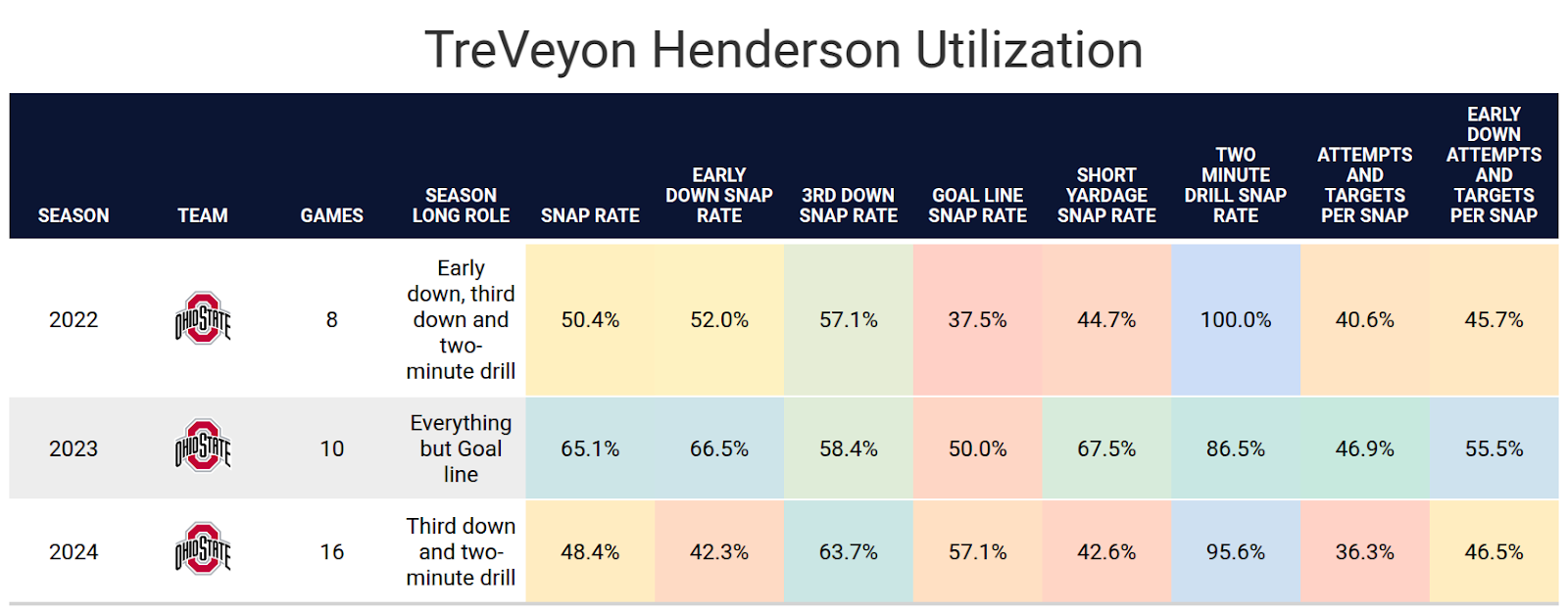
Loser: WR Luther Burden III, Missouri
There was a time when Burden was expected to be a first-round pick and potentially the third wide receiver off the board. He was expected to be a No. 2 wide receiver, which isn’t ideal for a first-round wide receiver, but plenty of teams can have two fantasy-relevant wide receivers.
Instead, Burden fell to the second round, behind four wide receivers in the first round and Jayden Higgins in the second round. He lands on a Bears team that has D.J. Moore as their top receiver and top-10 draft pick Rome Odunze, placing Burden third on the wide receiver depth chart. Chicago just spent its first-round pick on tight end Colston Loveland, which could make Burden the fourth option in the passing game. While other receivers might start their career as third or fourth options, there is a path up the pecking order due to players’ age or contract situation. With Burden, both Odunze and Loveland are early in their rookie contracts. Moore signed a four-year extension last summer, which will keep him on the roster a minimum of two more seasons.
The one silver lining is that Burden played the majority of his snaps in college out of the slot. Odunze played 33% of snaps from the slot last season, while Moore has never played more than 31% of snaps from the slot. This means the starting slot role is likely his. Bears head coach Ben Johnson just spent the last few years helping Amon-Ra St. Brown become a fantasy superstar playing out of the slot. There is at least a chance Burden can shine in this role, leading him to overtake Odunze on the depth chart, but the path to get there will be difficult.
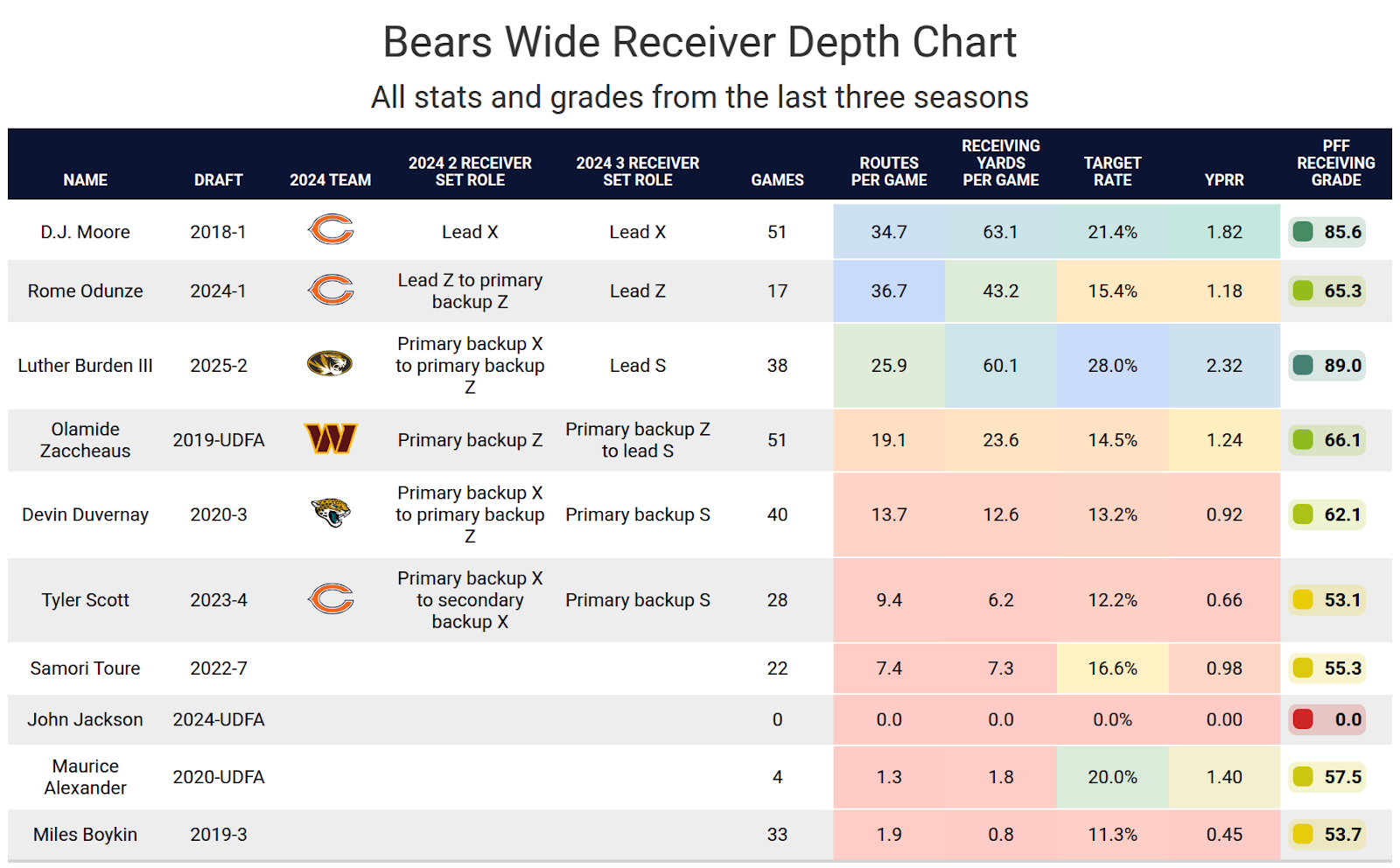
Loser: WR Christian Kirk, Houston Texans
Wide receiver was a known team need for the Texans heading into the draft, and it was a decent possibility the Texans would use their first pick on one. If Houston picked a player in the third round, it would have likely been the clear third wide receiver, allowing Kirk to play in two-receiver sets. The fact that Houston drafted wide receiver Jayden Higgins with the 34th overall pick means Kirk’s playing time in two-receiver sets is in jeopardy. Higgins was a highly productive outside wide receiver in college.
The Texans followed up the Higgins pick with his teammate Jaylin Noel in the third round. Noel primarily played out of the slot. There are numerous situations where a third-round wide receiver doesn’t contribute much as a rookie, but this further highlights the Texans’ desire to bring in more wide receivers, thereby crowding the depth chart.
Kirk had a chance to be a highly productive slot receiver, playing a similar role to Stefon Diggs last season, but Diggs was playing on all three downs. Kirk could have been a borderline fantasy starter, but now he will likely be outside of the top-40 overall receivers.
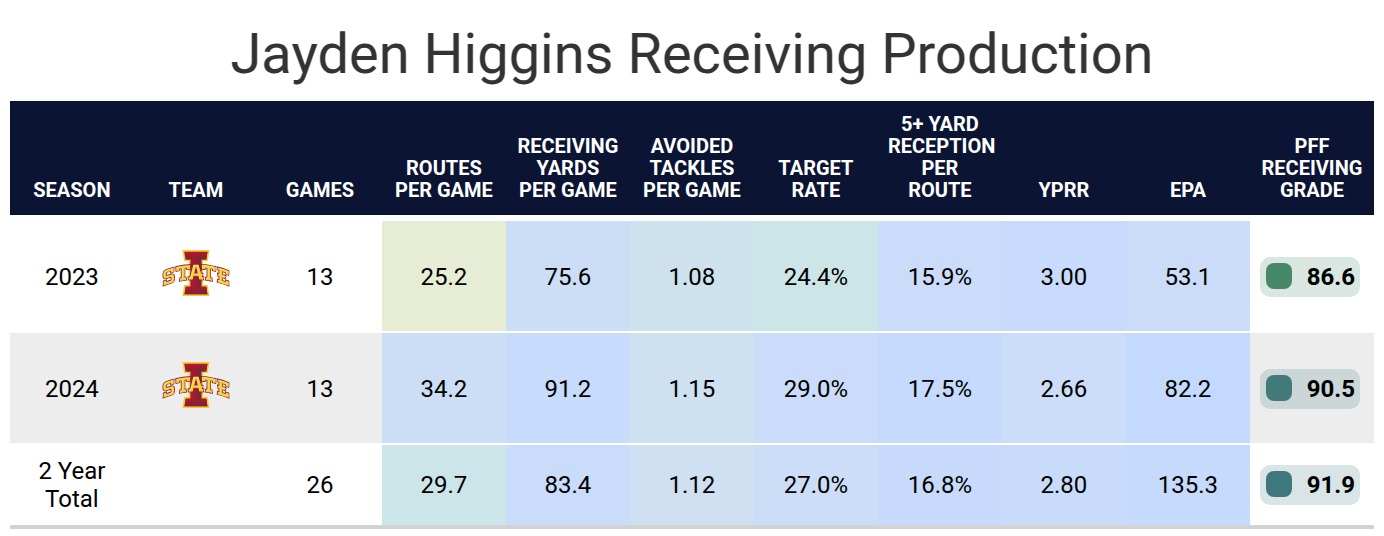
Loser: RB Kaleb Johnson, Pittsburgh Steelers
Johnson was the consensus fifth running back on big boards, expecting to be a late second-round pick. Instead, he was selected in the middle of the third round. There were still several great potential landing spots for Johnson despite the slide. The Chicago Bears and Dallas Cowboys could both use a new No. 1 running back, but both invested in the offensive line. The Jacksonville Jaguars, Washington Commanders, New York Giants and Kansas City Chiefs were four other teams that had a clear path to playing time for a running back.
Instead, Johnson landed with the Steelers, who have made it clear they think Jaylen Warren can be the lead back. Johnson will still play a decent amount of snaps and get five-to-10 carries per game, but it will probably be less playing time than Najee Harris had last season. Johnson landing with the Steelers is also an odd fit because Johnson was notably better on gap runs than zone ones. The Steelers had the fourth-highest zone run rate last season.
This is also somewhat bad news for Warren. It was likely that the Steelers would pick a back at some point, but ideally, it would have been a Day 3 back instead of a Day 2 selection.
